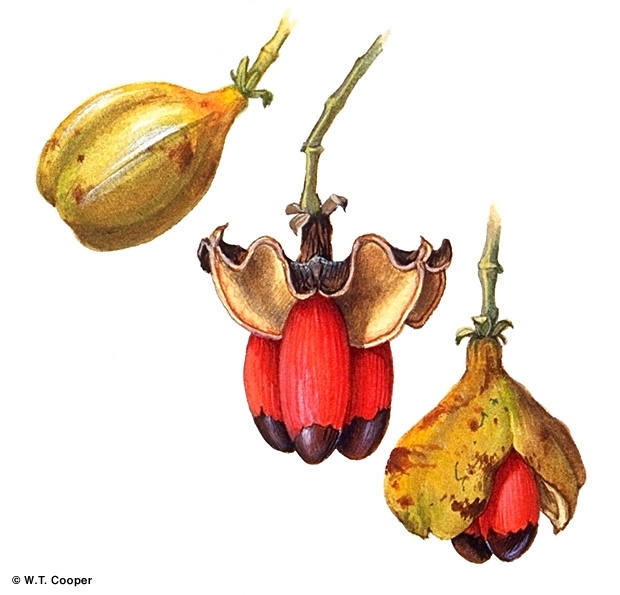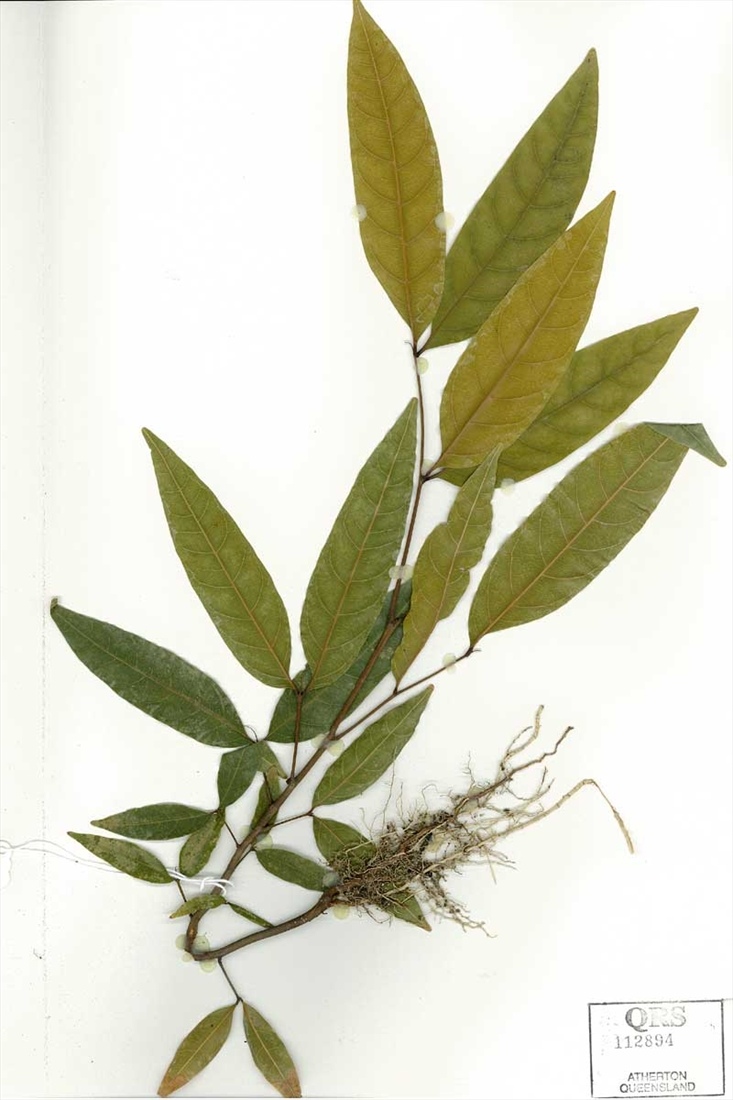Australian Tropical Rainforest Plants - Online edition
Cupaniopsis papillosa P.I.Forst.




Forster, P.I. (2006) Austrobaileya 7(2): 293. Type: Queensland, Cook District: Gold Coast road, near Ravenshoe, 19 March 2004, W. Cooper 1838 & R. Jensen.
Grows into a small tree.
Inflorescences pendulous, occasionally branching from base, 70-300 mm long, panicles with long side branches. Flowers either functionally male or female in the same inflorescence, with sterile organs of the opposite sex present. Female flowers not available. Male flowers 3-5 x 5-9 mm, cream; pedicels 3-4 x 0.5-0.8 mm.
Fruits variable in colour but brown to black after dehiscence. Calyx persistent at the base, fruits stipitate. Seeds about three per fruit, each seed about 15-18 x 8-9 mm. Aril thin, enclosing 3/4 to most of the seed. Fruits usually pendulous with the seeds hanging downwards.
First pair of leaves compound, each with two leaflets, margins smooth. Compound leaf rhachis extending beyond the leaflets. At the tenth leaf stage: compound leaf with two or four leaflets, rhachis projecting beyond the point of attachment of the apical pair of leaflets by 7-10 mm. Leaflet blades broadly lanceolate to elliptic, base very oblique, midrib raised on the upper surface. Seed germination time 17 days.
Occurs in NEQ, known only from a few collections made in the Ravenshoe-Tully Falls area. Altitudinal range from 900-1000 m. Grows as an understory tree in well developed upland rain forest and regrowth.
This species is similar to C. dallachyi in foliage but differes in a number of features, including aril colour.





